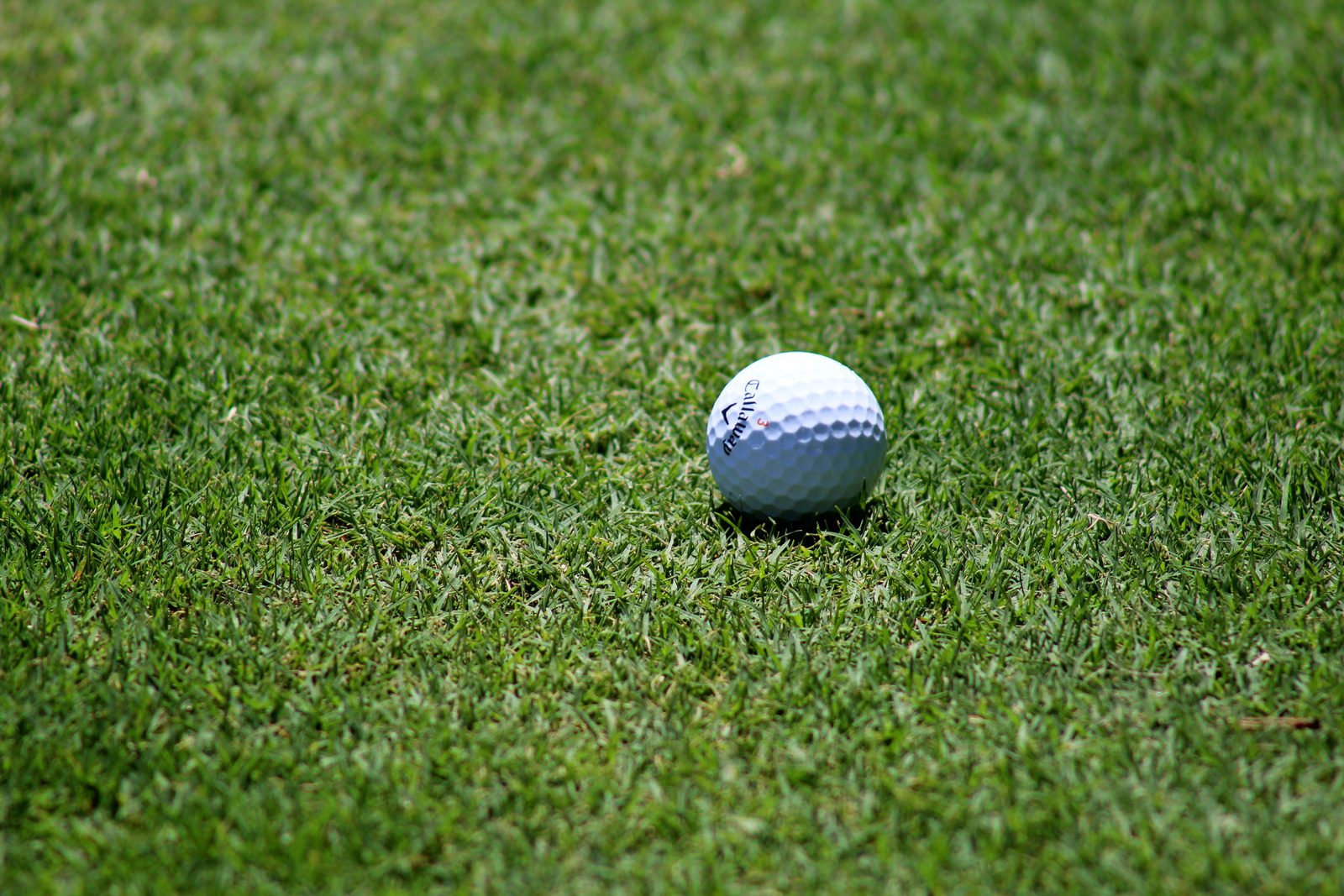New golfers have an overwhelming amount of choices to make when starting the game, and choosing the best golf balls for beginners is no exception.
You’ve probably seen the hundreds of choices when it comes to golf balls, and after a while, it can become confusing and overwhelming.
What’s interesting about choosing golf balls- especially golf balls for beginners- is that the most expensive isn’t necessarily the best option! Same goes for “what the pros use”.
We’ll break down the best picks to get your game off to a great start with choices for every budget.
Our Picks for the best Golf Balls for Beginners
| Golf Ball Brand and Model | Average Price on Amazon |
| Top Pick: Callaway Chrome Soft Golf Balls | $35.42 / dozen |
| Nike PD Long Golf Balls | $39.99 / dozen |
| Callaway Supersoft Golf Balls | $19.99 / dozen |
| Srixon Soft Feel Golf Balls | $22.88 / dozen |
| TaylorMade Burner Golf Balls | $20.99 / dozen |
| Titleist Velocity Golf Balls | $32.99 / dozen |
| Callaway Warbird Golf Balls | $16.96 / dozen |
| Pinnacle Soft Golf Balls | $19.99 / dozen |
| Titleist Pro V1 | $47.95 / dozen |
| Vice Pro Golf Balls | $34.99 / dozen |
Our Top Pick: Callaway Chrome Soft Golf Balls

Callaway is one of the biggest brands in golf – and for good reason. Callaway Chrome Soft Golf balls feature a patented dual-core construction that pairs a firm outer core with an exceptionally soft inner core.
The firm outer core provides better control for low handicappers with higher club head speeds, while the the soft inner core allows for better distances and faster ball speeds for golfers with a lower swing speed.
This golf ball’s setup and construction ensures that you’ll see a direct benefit no matter your play style.
Pros:
- Construction allows for more consistent and easier long-distance shots
- Great value for the money compared to similar performing golf balls (comes in a pack of twelve golf balls)
- Easy-to-spot design
Cons
- Limited design / color options (golf balls available in white, yellow, and a red Truvis pattern)
Our #2 Pick: Nike PD Long Golf Balls

Although Nike is no longer producing golf equipment, they continue to produce high quality golf balls at competitive prices.
The “PD” in Nike’s PD Long Golf Balls stands for Power Distance, and these balls deliver on that promise. Nike packs a high-velocity core and a softened cover in this ball, which helps you gain greater distance off the tee.
Nike PD Long balls have a great feel playing off of irons and have a bit better of a roll distance than other balls in their segment, which make it a great golf ball choice for beginners.
They even went the extra mile and packed in 314 dimples on the ball’s surface to give it better aerodynamic performance.
Pros:
- Excellent price per dozen golf balls
- Great ball feel
- Longer roll upon landing versus than other balls
Cons:
- Not as soft as other distance-focused golf balls
Our #3 Pick: Callaway Supersoft Golf Balls

Callaway holds multiple spots on this list, and for good reason: they make outstanding golf balls with different features for players at any stage in the sport.
As the name implies, these golf balls are super soft (get it?) and are best suited for newer golfers who don’t have very high swing speeds. In fact, these are some of the softest golf balls on the market.
Pros:
- Ultra-Low compression core produces long, straight drives
- Great feel for short game
- Designed for low spin on drives and short game
Cons:
- Some players may find the ball feel too soft for their preference
Our #4 Pick: Srixon Soft Feel Golf Balls

Srixon has been making golf balls for over 70 years, and in that time have won over 70 PGA Tour events and hold over 500 worldwide golf ball patents- more than Titleist, Callaway, and Nike combined. This expertise comes across in their products!
These are great golf balls for beginners as they respond well from drivers and irons to give you better consistency in your game. Srixon claims that independent testing shows their Soft Feel golf balls outperform their competitors in the 2-piece soft golf ball segment in the areas of drive length, accuracy, and stopping power, while still providing great spin for shots made on the green.
Pros:
- Soft cover and low compression core provides for great distance and a softer feel
- 338 Speed Dimple pattern cuts through wind for straighter shots and increased accuracy
- Spin is great where you need it (green shots), and minimized where you don’t (drives and iron shots)
- Excellent price
Cons:
- Spin and softness are less than other more expensive balls
Our #5 Pick: TaylorMade Burner Golf Balls

TaylorMade’s Burner Golf Balls provide a great ball choice for newer golfers by combining a ball that can achieve max distance while also providing a soft feel. These golf balls allow for you to get a high launch angle with every club in your bag, providing for a better and more consistent game from this 2-piece ball.
Don’t be fooled by the 2-piece construction, though: these balls really do provide a soft feel from drivers all the way to your putter, and manage to pull off the stunt of not feeling like hitting rocks in the process.
Pros:
- Great feel across all clubs
- React Core provides better energy transfer from club to ball, offering long shot carry and distance
- Excellent pricing for performance as compared to higher-priced balls such as the Titleist Pro V1
Cons:
- Limited color options: currently only available in Yellow.
Our #6 Top Pick: Titleist Velocity Golf Balls

ImageTitleist is one of the most respected brands in golf, and for good reason- they keep turning out high quality, high value products season after season.
The Titleist Velocity’s LSX core produces faster ball speed, which results in greater downrange distance while also minimizing spin to give you better results off every club in your bag.
These balls provide great mid-range softness and are great for beginners or high handicappers, especially those still perfecting their strike.
Pros:
- Great launch angle
- Mid-range soft feel makes this ball perform well with every club
- Generous roll on landing provides plenty of distance
- Comes in unique, eye-catching matte colors (green, orange, pink, and classic white)
Cons:
- A little bit more expensive than other golf balls in it’s class (still an excellent value)
Our #7 Top Pick: Callaway Warbird Golf Balls

Callaway claims a third spot on our list of top 10 best golf balls for beginners with the Warbird.
Callaway’s HEX aerodynamics to reduce drag and maximize speed, hang-time, and distance. This golf ball also has a great feel off of every club: soft, but not too soft -making it a versatile ball that you’ll love to come back to again and again.
Pros:
- Outstanding carry and distance
- Great value
- Durable construction (scuff-resisant and cut-proof)
Cons:
Our #8 Top Pick: Pinnacle Soft Golf Balls

Pinnacle has been associated with budget-friendly golf balls for quite some time. Not every golfer wants to pay pro prices! Pinnacle Soft Golf Balls provide great value and have the awards to prove it: this ball won the Silver Rating on Golf Digest’s 2018 hot list for it’s combination of price and performance.
These golf balls feature the lowest compression core Pinnacle has ever created, resulting in an exceptionally soft feel and reduced spin, both working together to increase shot distance, while it’s 332-dimple design provides an optimized and consistent ball flight on all shots.
The above factors make the Pinnacle Soft a great choice for golfers with lower clubhead speeds, and is a top choice of amateur golfers of varying skill levels.
Pros:
- Consistent ball flight every time
- Low-compression core offers soft feel and better spin control
- Very popular among new golfers
Cons:
- Low compression core may not pair well with higher club head speeds
- Limited control on greenside shots
Our #9 Top Pick: Titleist Pro V1

This 3-piece construction ball from Titleist features a soft feel, 352 dimples, and features Titleist’s patented Drop-and-Stop short game technology to minimize roll and provide you better control in every area of your game.
These balls are used by players of varying skill levels, as they offer a lower flight trajectory that some players prefer. Don’t be confused by it’s similarly-named counterpart, the Titleist Pro V1x – the V1x is better suited for more experienced players who prefer a firmer feel and higher spin.
The Pro V1 is a great golf ball for beginners that combines solid, consistent performance with any club to help you shoot your best scores.
Pros:
- Low spin maximizes control
- Excellent shot trajectory and distance
- Nice, soft feel
Cons:
- Highest-priced on this list of best golf balls for beginners
Our #10 Top Pick: Vice Pro Golf Balls

A relative newcomer in the golf ball space, Vice is a direct-to-consumer brand that only sells online, which allows them to pass some of the savings on to you. Vice’s distinct logo and even cooler packaging has been helping them snatch up new customers of all skill levels since they entered the market.
Vice Pro golf balls are made from a 3-piece construction and feature 318 dimples for stable trajectory, and feature an increased high-energy speed core (HESC) for better speed and distance off the tee.
This ball is optimized for higher ball speed and amped-up driver distance while minimizing spin. These characteristics make this ball a great choice for golfers with medium to high swing speeds.
Pros:
- Excellent distance and driver performance
- Low spin provides greater control
- Lower pricing than similar golf balls (such as the Titleist Pro V1)
Cons:
- Not well-suited for players with low swing speeds
Best Golf Balls for Beginners Buyer’s Guide – What to Look For

Golf balls may seem like a minor choice, and it’s easy to get caught up in the many options available and just chuck it all up to fancy marketing. This would be a mistake! A golfer’s ball is an important part of their game.
While we do have a wide variety of choices when selecting the best golf ball for beginners, we need to keep in mind the different factors of golf balls, and the roles those factors play in your game.
What Do Beginners Need from Their Golf Balls?
As a newer golfer, you’ll want to focus on three key factors when choosing the best golf ball: low compression, low spin, and low cost.
Don’t get too hung up on construction style, dimple count, or other factors- focus on what feels great and improves your game the best!
Look through the following areas to gain a better understanding of how each affects a golf ball’s performance.
Cost
Beginner golfers should take price into consideration as a key point when choosing the best golf ball to start with. Even avid golfers can easily lose balls to water hazards, deep rough, and more at the rate of between 1 and 2 balls per round!
Considering that you may lose a half dozen or more balls as a new golfer, you’ll want to keep your budget in mind when choosing a ball.
The bottom line here is that you don’t need to buy expensive golf balls when starting out, as your skills won’t even allow you to benefit from the technology in most premium golf balls.
Spin
Spin in your golf ball actually allows your ball to travel higher in the air, using the aerodynamics of the dimples to create the “push” beneath the ball. Simply put, the more spin a ball has, the higher in the air it will go. You’ll often find that the best golf balls for beginners have low spin in order to provide better control and consistency in shots.
Compression (a.k.a. Hard vs. Soft Golf Balls)
Simply put, compression is a measurement of how much a ball compresses against the club face at impact. The ball launches as that compression is released, which directly affects your shot distance.
The lower a golf ball’s compression rating, the softer the ball feels, while a ball feels firmer as it’s compression rating increases.
Typically balls are marked with compression numbers, ranging from 60 to 110. Overall, these ranges are split into three compression ratings to make it easy for you to determine which compression rating is best for you.
Which Golf Ball Compression Rating is Right for You?
If your swing is 85mph or less
Low-compression golf balls are the best bet here, as every yard matters in your game. Beginners, juniors, ladies, and seniors will benefit most from low compression. Look for a rating 80 or lower.
If your swing is 85-104mph
Mid compression golf balls are suggested for you, as low compression balls could create control issues. These balls will provide a combination of control and distance for most players. Look for a compression rating of 80 to 90.
If your swing is 105mph or above
Your best bet is a high compression or premium ball, as you’ll generate good distance with nearly any ball due to your strong swing speed. Low compression balls could result in a lack of control. Target a compression rating of 90 or above.
Not sure of your swing speed? Check out our golf ball selector guide where we show you how to measure your swing speed without the need for any expensive equipment!
Construction
Golf balls come in five main construction types that involve different materials and technology, each of which can impact your game.
Let’s walk through the most common ball types on the market today:
1-Piece Golf Balls
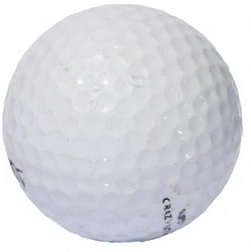
Construction: typically made 100% from Surlyn, molded with dimples
Best for: Beginners, driving ranges, and mini golf courses
Pros: Highly durable and inexpensive
Cons: Poor feel, minimized spin
2-Piece Golf Balls
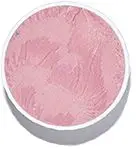
Construction: Solid core made from rubber or Polybutadiene (a synthetic rubber), surrounded by an exterior cover of Surlyn or urethane.
Best for: Beginners
Pros: Highly durable, good distance coverage
Cons: Harder to control
3-Piece Golf Balls
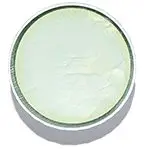
Construction: Solid liquid or rubber core, wrapped in a secondary layer of enhanced rubber, surrounded by an exterior cover of Surlyn, Balata, or urethane.
Best for: mid-level and experienced players
Pros: More spin than 2-piece balls, greater feel and control
Cons: Higher cost and less distance than 2-piece balls
4-Piece Golf Balls
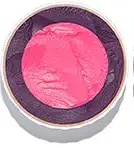
Construction: Solid rubber center, inner cover layer, then a middle cover, surrounded by a urethane exterior cover. 4-piece balls typically have higher dimple counts than their 2-piece and 3-piece counterparts.
Best for: Professionals and experienced players
Pros: More spin than 3-piece balls (especially when hitting with irons), and better performance on the greens.
Cons: Less forgiving, higher cost
Dimple Count
Dimples in the golf ball help it fly by creating a thin layer of air that “grabs” the ball’s surface, increasing lift and decreasing aerodynamic drag.
Varying patterns, sizes, and shapes affect the ball’s distance, spin rate, and stability. A totally smooth golf ball hit by a pro would travel around half the distance of today’s modern golf balls!
Most golf balls on the market today have a dimple range of 300 to 500.
Here’s a great video from the PGA on the science of golf ball dimples and how they help:
Best Golf Balls for Beginners: Frequently Asked Questions
What Are Golf Balls Made Of?
Golf balls are usually made of a rubber or resin core, wrapped in a surlyn or polyurethane cover. The core or inner layers can be between 1 and 3 layers of different types of materials, even using liquid within a membrane for advanced balls. Surlyn covers are the most durable and have a harder feel, while urethane covers provide greater control and a softer feel.
What Is A Golf Ball Compression Rating?
A golf ball’s compression rating is a measurement of how much a ball compresses against the club face at impact. Compression ratings usually fall between 60 and 110, with lower compression ratings being best for new golfers.
What Sizes Do Golf Balls Come In?
While golf balls come in varying sizes, the minimum size should be 1.680 inches according to the official Rules of Golf. Most balls found at retail will be of the same size, and you shouldn’t worry about this factor when making your purchase.
What Is The Weight Of A Golf Ball?
Similar to the golf ball size question above, a golf ball’s weight should not exceed 1.620 ounces per the official Rules of Golf. Don’t get hung up on ball weight when making your purchase either.
What Are Golf Ball Dimples?
Golf ball dimples are symmetrical pits or grooves on the ball’s surface. These typically come in a circular or hexagonal pattern, although some manufacturers have experimented with ovals as well. Golf ball dimples allow air to flow smoothly around a ball’s surface which reduces drag and increases lift.
Do Dimple Counts Matter?
While balls with higher dimple counts perform better, professionals have found that there is minimal difference between most standard dimple counts on balls. We don’t recommend paying a premium between the same general type of ball only due to a difference in dimple count.
What Colors Do Golf Balls Come In?
The most common color for golf balls are white, but you will find other popular colors such as yellow, green, red, and pink. Most of these variations are neon to help them stand out on the course to aid with visibility. Some golf balls also come in unique patterns or have stripes on them to help them be identified.
Why Are Golf Balls Numbered?
Golf balls are numbered to make it easier for golfers to identify which ball is theirs. This comes in handy especially when multiple players are using the same brand of ball, or if playing in a scramble or tournament. (If you’re not sure what a scramble is, check out our glossary of golf terms).
Should I Buy New Or Used Golf Balls?
If you’re learning to play golf or still getting used to the sport, we suggest purchasing new golf balls. Some used balls have imperfections such as cuts in the cover or other wear and tear that can cause the ball to fly inconsistently and result in poor shots even when hit well. Don’t make it harder on yourself!
If you’re looking to save money, you can consider X-Out versions of your favorite brand of golf ball. These are the same balls and construction as regularly-priced golf balls, but may have misprints of the logo or markings on the ball which make them essentially factory seconds.
You can find used or recycled golf balls easily and inexpensively from retailers online, but consider that you’ll get a better performance from a new ball, which is key when you’re learning the game.
Should I Buy Lake Balls?
It’s tempting to buy these balls, as they are cheap! That savings comes with a greater price, which is reduced distance. We recommend using these if driving balls on your personal property and for practice only.
What Golf Ball Should I Use For My Swing Speed?
Generally speaking, if your swing is 85mph or less you should aim for a low-compression golf ball. These balls will have a compression rating of 80 or below.
If your golf swing is 85-104 mph, a mid compression ball will work best. These golf balls will have a compression rating of 80 to 90.
If your golf swing is above 105mph, you’ll likely want to go for high compression golf balls or premium golf balls, with a compression rating of 90 or higher.
Do I Need Special Balls For The Driving Range?
Most driving ranges have golf balls available, and the fee to use the range balls will be much lower than the cost of bringing your own balls. Plus, you don’t have to retrieve the range balls after hitting them!
What’s a Ball Fitting?
A golf ball fitting is a process offered by golf fitters to match you to the perfect golf ball for your game, typically by measuring performance and taking your skill level, swing style, and posture into account. Sometimes a golf ball fitting will be included as part of the custom club fitting process, or it can be done separately.
Conclusion

A good beginner golf ball should be matched to your play style and swing speed. A ball that provides some forgiveness on less consistent hits while traveling a long distance without fast swings is desirable.
Now that you have some of the best golf balls for beginners selections down, you’re ready to make a purchase, or you can head over to our golf ball selector guide to fine tune your process.
Once you’ve chosen the best ball for your game, take a look at our top picks of the most forgiving drivers to help you launch those balls as accurately – and as far – as possible.

